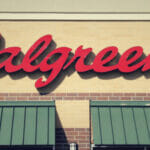By Jon Clements
Market Vectors Russia ETF (NYSE:RSX) | LONG | Leap Calls 15 Jan 2016
Investment Thesis
RSX is a Russian large-cap ETF holding 48 companies with an average mkt cap of $31B. Top 15 holdings = 76.6%, exposure to energy sector = 42.5%, and holdings outside of Russia = 11.5%. Over the past year, RSX has suffered downward pressure from to geopolitical and military actions in the region. I believe the Russian market in total is undervalued and buying RSX leap calls provide an attractive risk/return profile.
Catalysts
Relative Valuation. 12M Fwd P/E: Russia (4.2), emerging markets, (11.0) and developed markets (14.7). 12M Fwd P/B: Russia (0.5), emerging markets (1.4), and developed markets (1.9). I usually do not consider relative valuation as a catalyst, but I believe the now publicized worldwide knowledge of Russia’s valuation will spark future investment in the country tightening the above multiples.
Rising Commodity Prices. 42.5% of RSX is expose to the energy sector. While low commodity prices have hindered past growth, as commodity prices rise so will the earnings of RSX’s holdings. Russia is a top producer of natural gas, palladium, and potash. In short, if you are bullish on commodity prices looking out to 2016, then RSX is one of the cheapest opportunities to play the move.
Beating Expectations. As the events have unraveled in Russia, investors have sold RSX off in sync with downgrades and hypothetical future affects on GDP due to financial sanctions. Going forward, unlike a typical investment where the market will reward growth and expansion, for the holdings of RSX I believe the market will reward 0% YOY growth (evidence of stabilization) to see upward movement.
Outside Russia Exposure. 11.5% of RSX allocation is in companies outside of Russia: Netherlands (5.6%), Cyprus (3.26%), United Kingdom (2.13%), and Luxembourg (0.27%). An investor looking at the value of these companies trading at 6.44x earnings compared to their respective countries would argue for an upward revaluation.
Disappearance of Headlines. The majority of headlines coming out of Russia over the past year have been non-economic related. While the events that played out were without question unfortunate from a humanitarian standpoint, as an investor it is worth noticing the selloff can be pointed to few if any real economic headlines. As the region calms, I believe investors will get a clearer view of the country and economic opportunities, increasing investments and capital inflows back into the country.
Risk
Geopolitical Landscape. The US, EU, Japan, and Australia among other major world economic players have placed sanctions on Russia as form of punishment toward its behavior. Further sanctions will put pressure on upward movement from a headline and a financial standpoint.
Inflation. CPI hit 15% in 2008, fell to 2% by 2012, and now has reversed to currently 7.5%. A move higher is almost certain as the central bank attempts to soften financial sanctions, but limiting how much higher is the main risk. A move into double digits poses as a legitimate risk for the country and economy.
Stagnate Russian Economy. The Russian economy grew an annualized rate of 7% from 1998 to 2008, but since has underperformed most emerging markets. Stagnation or any further widening of the growth rate gap could prolong Russia’s underperformance and investor disinterest.
Risk Premium. Russian securities demand a risk premium as a result of above average volatility and their “black swan” factor. If negative events continue to unravel in Russia, investors will maintain a large risk premium to other investments aiding the country’s chronic undervaluation.
Corruption. In 2013, Russia ranked 127 out of 177 on the Corruption Perception Index (countries are ranked from best to worst on the basis of public corruption). Russia has long been stifled with greedy officials and exploitative oligarchs, so those facts are priced in. The corruption risk in regards to RSX mainly stems from headlines risk and increasing public distrust in the country.
Recommendation
Winston Churchill once described Russia as a “riddle, wrapped in a mystery inside an enigma.” The country’s foreign policy actions seem to have no direction or forethought, giving near-term investors an almost impossible assignment. Looking short-term it is easy to harp on the region’s problems through headlines, so instead I look at two long-term facts: (1) Russia was already the cheapest significant stock market in the world going into this crisis, 2014 has made it even cheaper and (2) RSX is made up of the largest most stable blue-chip companies in Russia yielding a 2.94% dividend (3YR and 5RY growth rates, 59.7% and 14.8% respectively).
I believe in the long-term story of Russia and believe RSX offers the best way to play the opportunity. However given the near term volatility and the very serious risks involved, buying leap calls instead of stock to gain exposure provides a more attractive risk/return profile. The strategy I am recommending is either buying RSX leap calls on the dips (two weeks ago RSX was down ~17% YTD and leaps were selling 20-40% cheaper) or if Russia’s problems are prolonged into the Fall waiting to buy the issuance of 2017 leap calls.
Green – In the Money Red = Out of the Money












